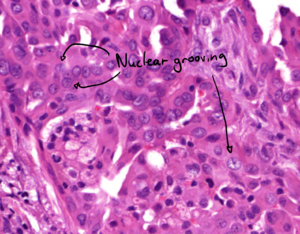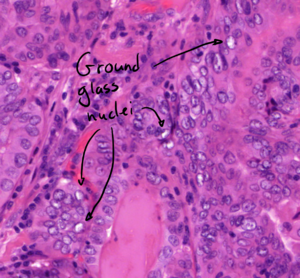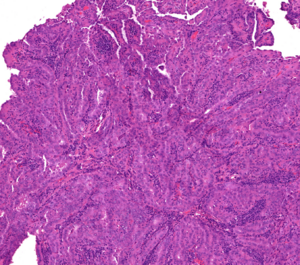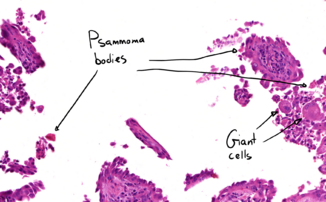26. Papillary carcinoma of the thyroid
Staining: HE
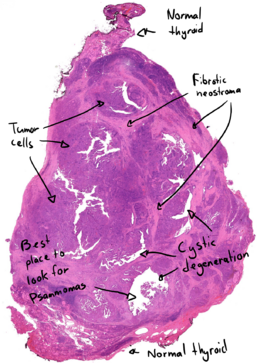
Organ: Thyroid
Description:
There are five histological characteristics in papillary thyroid carcinoma:
- Atypia
- Nuclear groove formation
- Nuclear pseudoinclusions
- Ground glass nuclei
- Psammoma bodies
Nuclear grooves are dark, basophilic “lines” in the nuclei of the tumor cells. Nuclear pseudoinclusions are eosinophilic inclusions inside the nuclei of the tumor cells. Ground glass nuclei are nuclei that are so pale that they are almost white. Psammoma bodies are collections of calcium that occur in areas of cystic degeneration.
Diagnosis: Papillary thyroid carcinoma

Risk factors:
- Women
- 20 – 55 years
Theory:
Even though it’s a papillary carcinoma the diagnosis is based on the histological characteristics above and not based on the presence of papillary structures.
The tumor cells are surrounded by fibrotic neostroma, fibrosis which is produced by fibroblasts in response to the tumor.
The nuclear groove and pseudoinclusions can be very hard to find as not many cells have those. Psammoma bodies can be hard to find as well but should be present in the area of cystic degeneration marked on the overview picture below.
In addition to thyroid carcinoma, psammoma bodies are often seen in ovarian carcinoma and meningioma.
